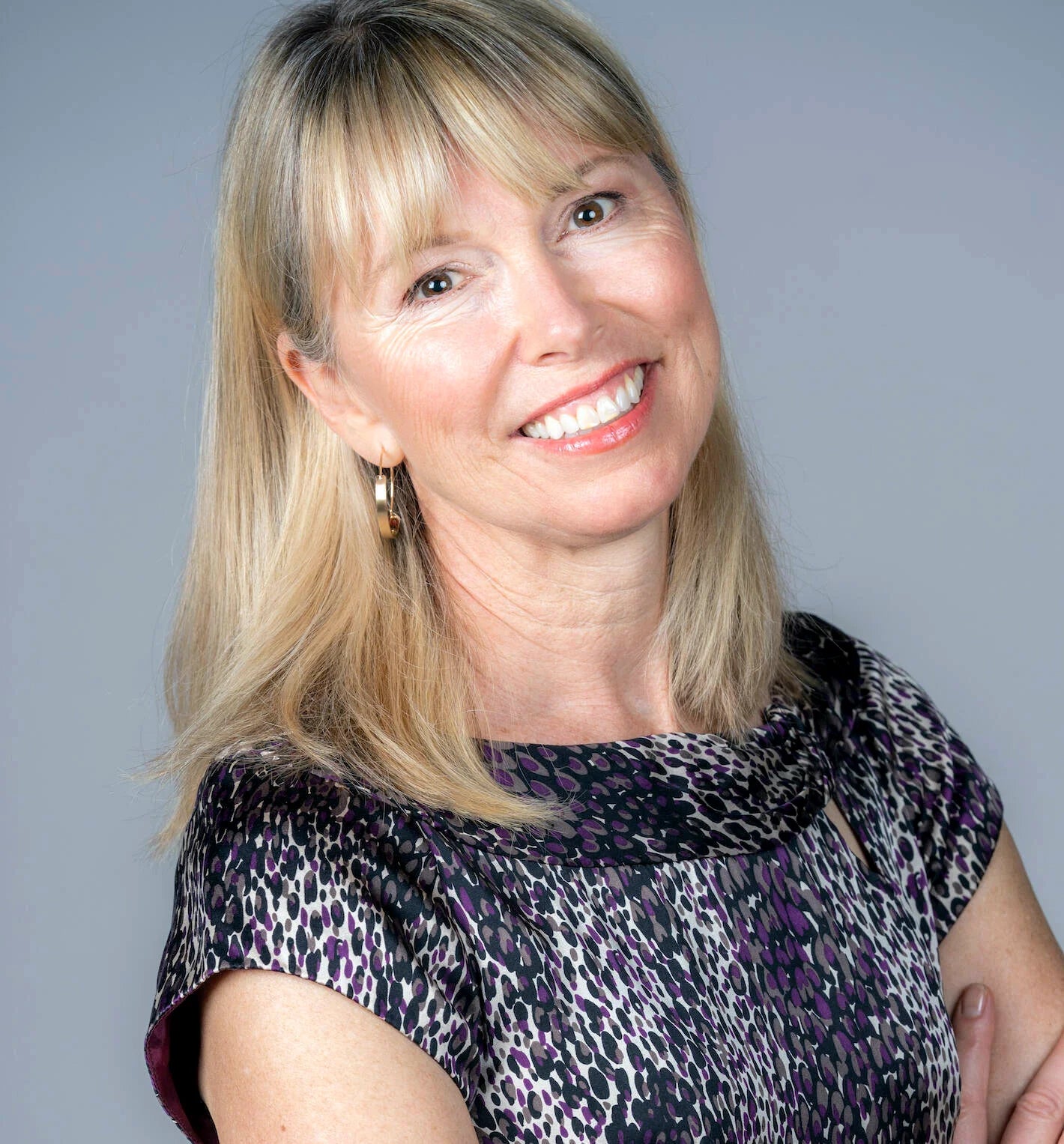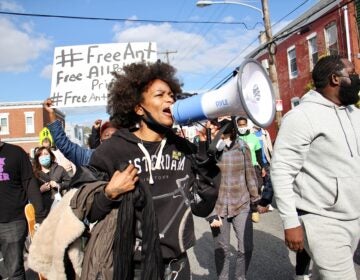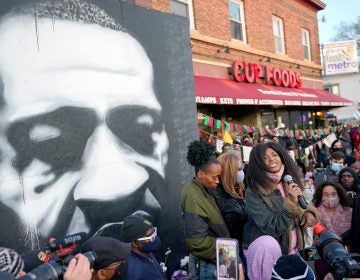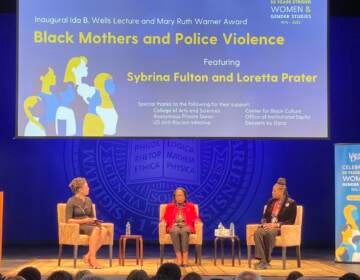How do people cope with the trauma of last summer’s violent clashes with police?
Morning Edition host Jennifer Lynn speaks with Engaging Men of Color Initiative member Gabriel Bryant about healing from trauma due to police brutality.
Listen 6:09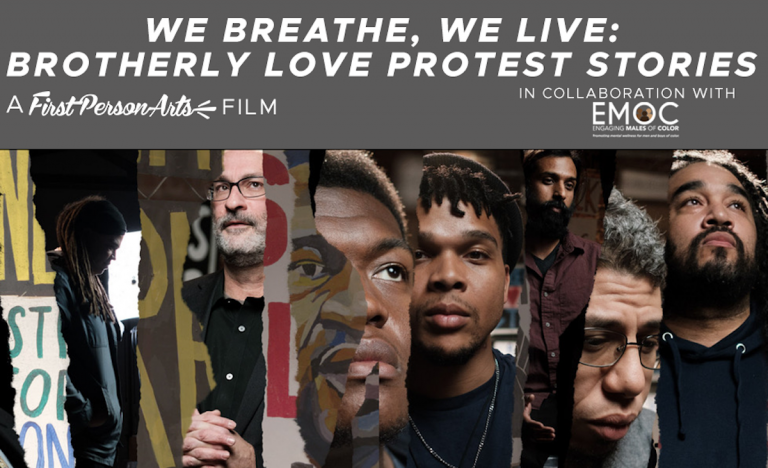
“We Breathe, We Live: Brotherly Love Protest Stories"
May is Mental Health Awareness Month. How do we cope after traumatic events like the deaths of people of color during altercations with police?
A new documentary shares powerful, emotional, first-person experiences of men who participated in Black Lives Matter protests in Philadelphia in 2020.
WHYY-TV premieres the film “We Breathe, We Live: Brotherly Love Protest Stories” Monday night at 9 p.m.
It’s a collaboration between First Person Arts and EMOC, the city’s Engaging Males of Color Initiative, which promotes mental health and wellness.
EMOC’s coordinator, Gabe Bryant, makes an appearance in the film. WHYY’s Jennifer Lynn recently spoke with him.
–
Welcome, Gabe. Good to have you.
Thank you for the opportunity.
This film opens with the chanting of names of people who were killed by law enforcement. It reminds me of the constant challenges that people of color face in this country.
Yeah, I mean, I think one of the things that we’ve realized is that these current names, these hashtags that we see on social media, they’re triggering, they’re re-traumatizing. We’ve spoken to elders recently in our community who were still traumatized from the officers in the Rodney King verdict, getting acquitted, you know, over 25 years ago. So these are things that are long-lasting and we hope that people can begin to heal and find closure during these moments.
This documentary introduces us to several different men of color who participated in social justice protests in Philly following George Floyd’s death in Minneapolis a year ago. Their first-person accounts are very different, but also very kindred. And it brings me back to the name chanting. That chanting can be very valuable in protest, as a release to deal with the injustice and feelings of anger and loss.
The great thing about, I think, marches and rallies is that at the end of the day, those are organized to facilitate connection. So you’re next to somebody who joined you at a rally or to march at a location. All of the barriers that tend to exist in society are broken down in that moment. And so saying those names at the same time, in the spirit of a call and response, it allows all those walls of religion, of race, of ethnicity to be broken down just for a moment as we come together and say we as a community, as a society can never forget — even if I don’t know them, even if my background is so different — I’m trying to empathize right now more than ever, we need empathy in our community to deal with these issues.
Let’s listen to one of the men in the film…
The following audio is from the film.
“That day, there’s a moment of silence where people laid down in front of the Philadelphia Museum of Art. They did it for eight minutes and 46 seconds in solidarity with George Floyd. It was just a really powerful moment because you kind of, really like, felt the full eight minutes and 46 seconds. So laying down, and like feeling that, and then also imagining like a police officer, you know, kneeling on your neck for that amount of time. I think that definitely was a powerful moment for people.”
Isaac Scott is an artist. He watched protesters get pepper-sprayed by police on the Vine Street Expressway last June. Gabe, how did you find these gentlemen and how did you get them talking?
These were contacts of our team, people that we knew by being rooted in the community and knowing some of the players, the stakeholders. If we didn’t know folks, somebody else did. We wanted to make sure that we had a broad, vast kind of background of generations, age-wise, and experiences that we could bring to the table. I think when it came to them being vulnerable, we wanted to make our shoot days as safe a space as possible. We had phenomenal story guides with us by virtue of our partner, First Person Arts.
And director, Glenn Holsten, is masterful at prompting people to share their stories. Storytelling helps us cope with trauma, and I have read that men of color can be less apt to do this kind of sharing and so can miss out on its benefits.
Sure. You know, most men in general don’t go to the doctor for their physical health, let alone for their mental health, right? You know, when men of color have an ache or pain, we’ll walk it off. We’ll try to sleep it off, right? But what happens when that same person started to hear voices, or [is] dealing with anger issues or grief or sadness or loss? The most calls that I receive are from women saying, “Hey, you know, Mr. Bryant, my son, my father, my husband, my boyfriend is having challenges. And I keep telling him that he needs help. He doesn’t want to get help. What can I do?”
And opening up is one thing that can help. There are thousands, hundreds of thousands of men of color who have their own protest story from last year or from other times gone by.
Yes, yes. There’s a moment in the film where we’re actually standing on the parkway juxtaposed against the 100,000 and the idea that there are so many stories of folks who walked that park away from City Hall to the Art Museum and vice versa, right? And so I’m thankful that there are so many people who have stories, hopefully that can be amplified and our film does just that.
Fantastic. Gabe Bryant of EMOC, Philadelphia’s Engaging Males of Color Initiative. Thank you.
Thank you. Appreciate it.
–
“We Breathe, We Live: Brotherly Love Protest Stories” airs on WHYY-TV Monday night at 9.

Get daily updates from WHYY News!
WHYY is your source for fact-based, in-depth journalism and information. As a nonprofit organization, we rely on financial support from readers like you. Please give today.


